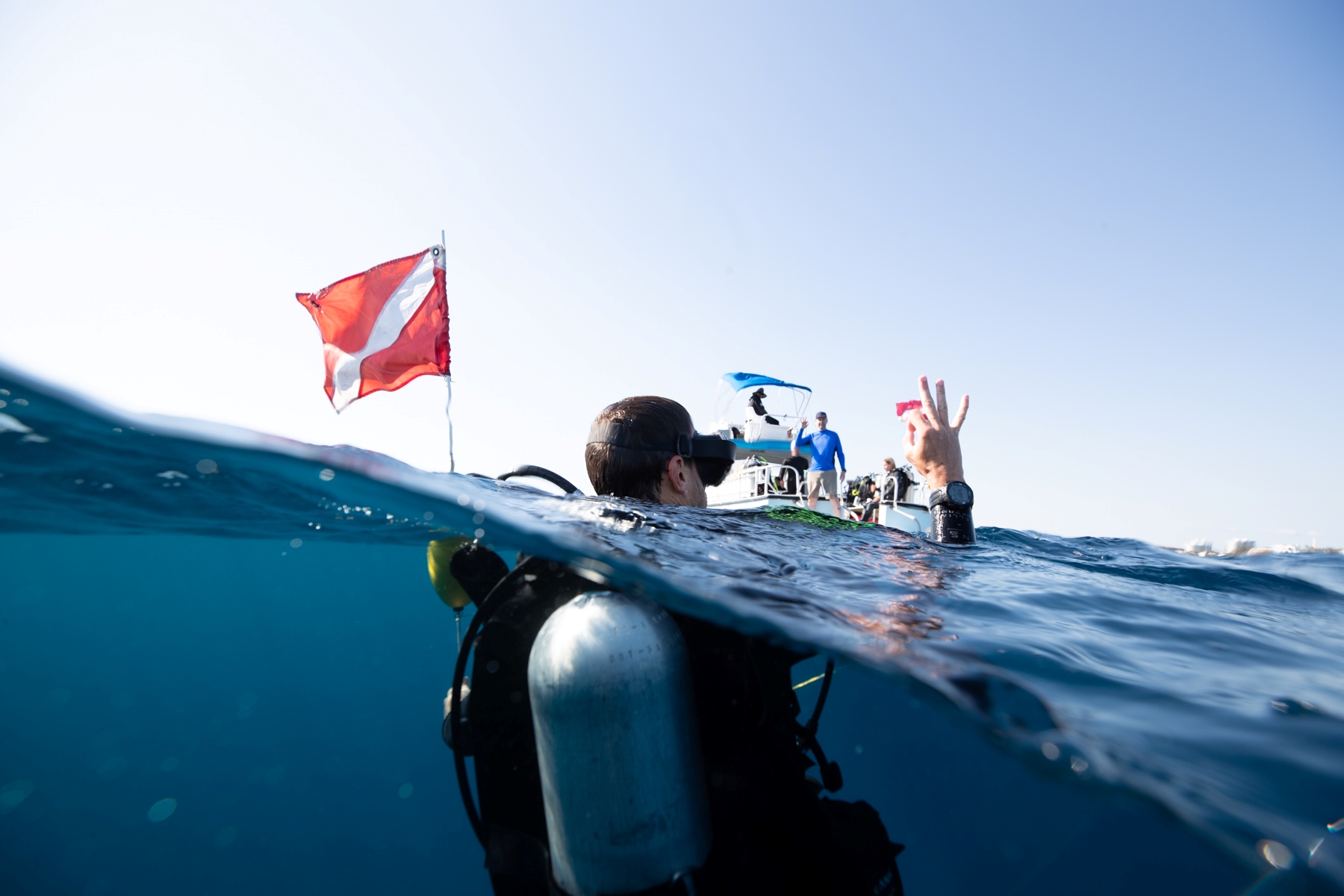
Does this sound familiar? You're finally taking the plunge, ready for your first open water dive. You've got your shiny new gear, your dive buddy by your side, and a heart full of excitement (and maybe a touch of nervousness). But as you descend into the underwater world, things don't quite go as planned. Your mask keeps fogging up, you're struggling to control your buoyancy, and you suddenly realize you've used half your air in the first five minutes. Panic sets in. Is this what scuba diving is all about?
Don't worry, newbie diver! Every scuba pro was once a wide-eyed beginner, fumbling with their diving gear and learning the ropes. We've all been there, made those mistakes, and come out on the other side as confident, skilled divers. So, take a deep breath (above water, of course), and let's explore some common beginner scuba mistakes and how to avoid them. With a little knowledge and practice, you'll be navigating the underwater world like a pro in no time!
Mistake #1: The Buoyancy Blues
Buoyancy control is the holy grail of scuba diving. It's what allows you to glide effortlessly through the water, conserve air, and avoid damaging delicate marine life. But for new divers, mastering buoyancy can feel like trying to tame a wild seahorse.
The Fix:
- Practice, Practice, Practice: Spend plenty of time in a pool or shallow water practicing buoyancy skills. Get comfortable adjusting your BCD, using your breath to fine-tune your position, and finding that sweet spot of neutral buoyancy.
- Proper Weighting: Don't be afraid to experiment with different amounts of weight until you find the right balance. Too much weight will make you sink like a stone, while too little will make you bob like a cork.
- Breath Control: Remember, your lungs are your built-in buoyancy compensators. Slow, deep breaths will help you ascend, while exhaling will help you descend. Use your breath in conjunction with your BCD to maintain perfect buoyancy.
Mistake #2: The Air Hog
Running out of air is a diver's worst nightmare. But for beginners, it's a surprisingly common mistake. Overexertion, improper breathing techniques, and panicking can all lead to rapid air depletion.
The Fix:
- Chill Out: Take a deep breath and relax. The more you stress, the more air you'll use. Remember, you're here to have fun!
- Slow and Steady: Move slowly and deliberately underwater. Avoid sudden movements and jerky fin kicks. Channel your inner sea turtle – slow and steady wins the race (or in this case, the dive).
- Breathe Deep: Practice long, slow, and deep breaths. Avoid short, shallow breaths, as these can lead to hyperventilation and increased air consumption.
Mistake #3: Skipping the Safety Check
Pre-dive safety checks aren't just a formality; they're a crucial step in ensuring your gear is functioning properly and you're prepared for your dive. Skipping this step can lead to frustrating (and potentially dangerous) problems underwater.
The Fix:
- BWRAF: Remember this handy acronym:
- B: BCD (check for leaks, proper inflation/deflation)
- W: Weights (ensure they're secure and properly adjusted)
- R: Releases (test all buckles and releases)
- A: Air (check your air supply and regulator)
- F: Final Check (make sure everything is in place and functioning)
- Buddy Check: Always conduct a buddy check before entering the water. This means double-checking each other's gear to ensure everything is secure and in working order. Think of it as a high-five for safety!
Mistake #4: The Squeeze
As you descend, the increasing pressure can cause discomfort or pain in your ears and sinuses if you don't equalize properly. This can quickly turn a fun dive into a painful experience.
The Fix:
- Equalize Early and Often: Start equalizing as soon as you begin your descent and continue to do so every few feet. Don't wait until you feel pain.
- Use Different Techniques: There are several equalization methods, such as the Valsalva maneuver, Toynbee maneuver, or swallowing. Experiment to find what works best for you.
- Ascend Slightly: If you feel pain, ascend a few feet until the discomfort subsides, then try equalizing again.
Mistake #5: Ignoring Your Limits
Dive tables and computers are your best friends when it comes to planning safe dives. They help you calculate your no-decompression limits, track your depth and time, and avoid the dreaded decompression sickness (the bends).
The Fix:
- Understand Dive Tables/Computer: Take the time to learn how to read and interpret dive tables or invest in a dive computer. These tools provide crucial information for planning safe dive profiles.
- Plan Your Dives: Before entering the water, plan your maximum depth and time based on your experience level, air consumption, and the dive site conditions.
- Make Safety Stops: Always make a safety stop at about 15 feet for 3-5 minutes at the end of your dive. This helps your body eliminate nitrogen and reduces the risk of decompression sickness.
Mistake #6: Underwater Bulldozer
Nobody likes a fin-flapping, sand-kicking diver. Not only is it disruptive to marine life, but it can also stir up sediment, reducing visibility for everyone.
The Fix:
- Master Buoyancy: Good buoyancy control is key to avoiding accidental contact with the bottom or delicate coral reefs.
- Fin Gently: Use slow, controlled fin kicks to avoid stirring up sand or damaging marine life.
- Be Aware of Your Surroundings: Pay attention to where your fins are and avoid kicking up sand or silt. Remember, you're a guest in the underwater world, so be respectful of its inhabitants.
Mistake #7: The Speedster Ascent
Ascending too quickly is a major no-no in scuba diving. It can lead to decompression sickness, lung overexpansion injuries, and even air embolism.
The Fix:
- Ascend Slowly: Follow your dive computer or tables and ascend at a rate no faster than 30 feet per minute (or slower than your smallest bubbles).
- Make Safety Stops: Make a safety stop at about 15 feet for 3-5 minutes at the end of every dive. This allows your body to release excess nitrogen gradually and reduces the risk of decompression sickness.
- Monitor Your Buoyancy: As you ascend, your buoyancy will increase. Adjust your BCD accordingly to maintain a slow, controlled ascent.
Mistake #8: The Dehydrated Diver
Dehydration can increase your risk of decompression sickness and make you feel fatigued during your dives.
The Fix:
- Hydrate, Hydrate, Hydrate: Drink plenty of water before, during (if possible), and after your dives. Avoid caffeine and alcohol, as these can dehydrate you further.
Mistake #9: Forgetting to Have Fun!
Scuba diving is meant to be an enjoyable experience. Don't get so caught up in the technicalities that you forget to relax and admire the underwater world.
The Fix:
- Focus on Your Breathing: Slow, deep breaths will help you relax and conserve air.
- Admire the Scenery: Take a moment to appreciate the beauty and diversity of the underwater world.
- Share the Experience: Dive with a buddy and share the excitement of your underwater adventures.
Even the Saltiest Sailor Was Once a Seasick Landlubber
Remember, everyone makes mistakes when they're first starting. The key is to learn from them and use them as stepping stones on your journey to becoming a confident, skilled diver.
So, embrace the challenges, learn from your experiences, and most importantly, have fun! The underwater world is full of wonders waiting to be discovered.
And hey, if you're looking for expert advice, top-notch gear, or just a friendly chat with fellow divers, don't hesitate to visit us at Dive Right In Scuba. We're always here to help you take the plunge and explore the depths with confidence!
